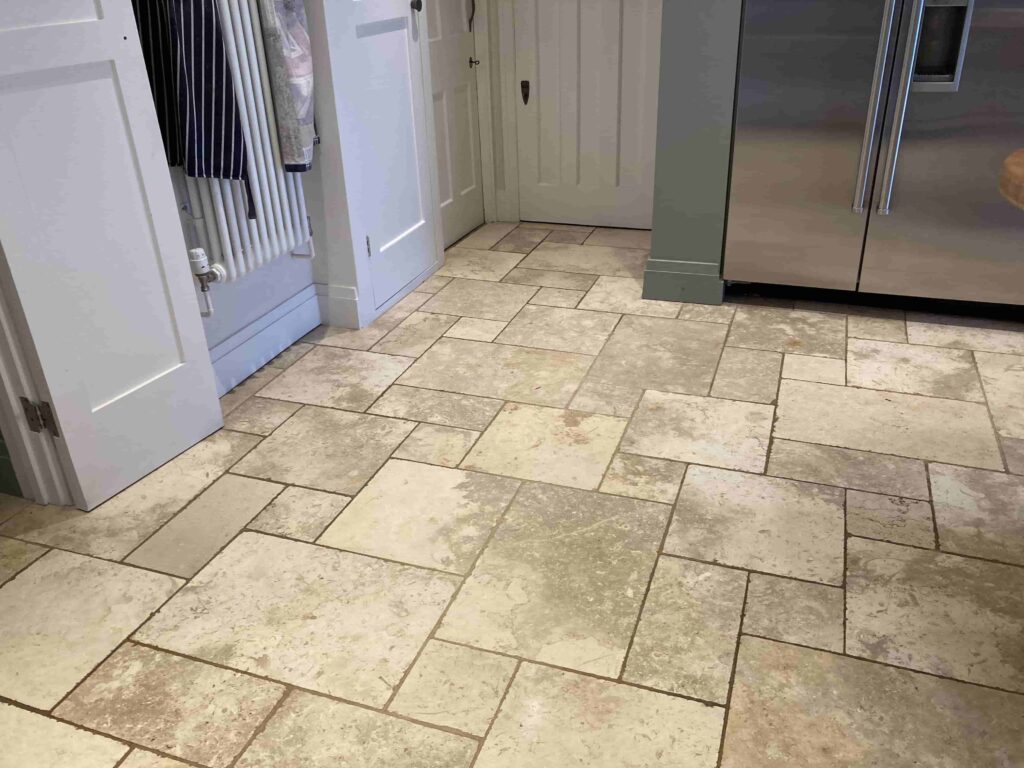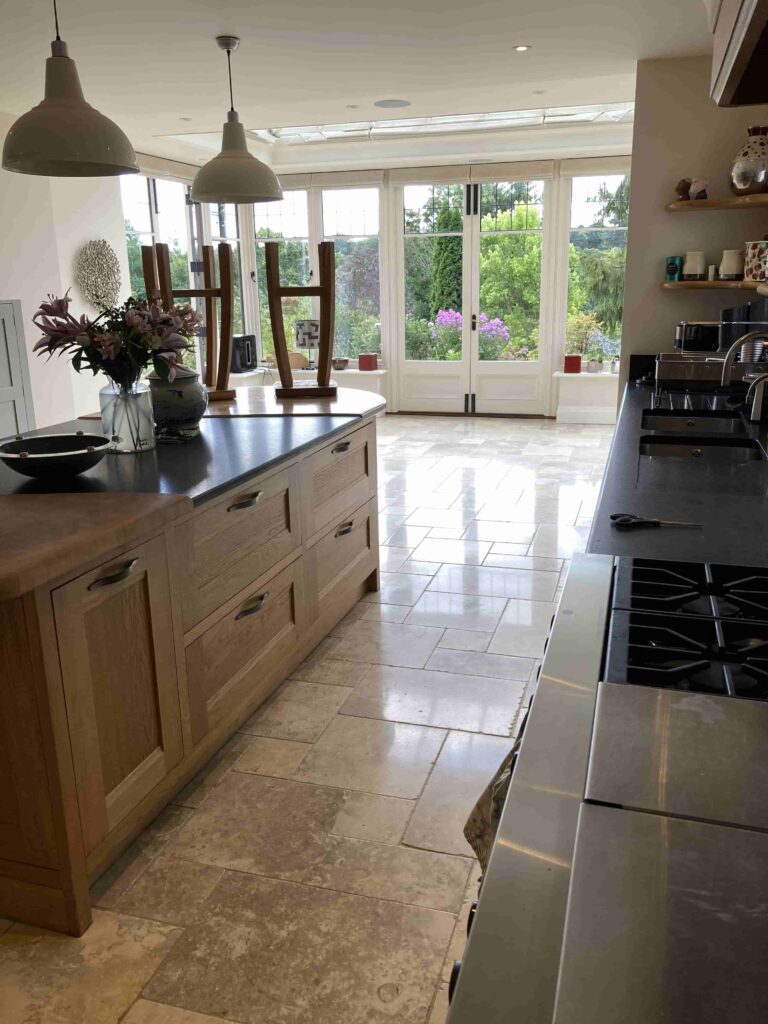Sealing Travertine Floor Tiles with Tile Doctor Ultra-Seal to achieve a Natural Look in Cobham
The property in Cobham had a large Travertine tiled floor in the kitchen, which was not looking its best, and was now in need of a deep clean and re-seal to bring it back to life.

Travertine is a beautiful, natural stone that needs some regular attention to keep it looking at its best. Like any natural stone its vulnerable to dirt becoming ingrained in the pores and to prevent this it needs to be sealed. A sealer keeps the dirt on the surface where it can be easily removed through regular cleaning, however a sealer will usually only last for three to four years depending on how the floor is used and maintained.
Another issue specific to Travertine is its acid sensitivity which comes from the calcium carbonate that it’s formed from. You need to be careful not to use acidic products on the stone as this can cause it to dissolve over time leading to pitts and potentially holes forming in the surface. If the pitts are not filled they will attract dirt easily making the floor hard to keep clean.
 |  |
I visited the property to survey the floor and gave the client a price for its renovation which would take two days. Whilst there I also carried out a small cleaning test to ascertain the best cleaning method and to demonstrate what could be achieved. They were happy to go ahead with the quote so we agreed a suitable date for the work to start.
Cleaning a Travertine Tiled Kitchen Floor
On day one I started by wrapping the kitchen cabinets in decorator’s plastic to protected them and applied a thin line of mastic where the tiles meet the floor. This is done to keep unwanted water out during the cleaning process.
The travertine floor had been laid using different sizes of tile in an irregular pattern which resulted in a lot of grout lines that needed cleaning. I find the best way to do this is with Tile Doctor Pro-Clean, scrubbing it in by hand with a wire brush, its hard work but its effective although it did take up most of the morning. Afterwards the grout was rinsed with water and the waste removed with a wet vacuum.
After lunch, I turned my attention to the tiles which needed to be burnished using a series of diamond pads fitted to a buffing machine fitted with extra weight to increase traction. Work started with the application of a coarse 400-grit pad which is run over each tile three to four times using only water for lubrication. The floor was then rinsed and the soiling extracted before moving onto the next pad in the series which is 800-grit and then onto 1500-grit.
This wet process pores in the stone allowing the dirt to be flushed out and then slowly closes them again leaving the floor clean and ready for sealing. By the end of day one all the Stone and Grout was clean and was left to dry out overnight.
Sealing a Travertine Tiled Kitchen Floor
The following day I checked the moisture levels of the floor with a damp meter to make sure it was dry and ready to accept a sealer. The results were good, so I set about applying the first of what would be two coats of Tile Doctor Ultra-Seal. This sealer is an impregnator that soaks into the pores of the stone preventing dirt from becoming ingrained there, it doesn’t contain a colour enhancer so leaves a very natural finish.

The floor was then once polished with the final burnishing pad in the set which is a very fine 3000-grit, this last pad removes any excess sealer and leaves a nice subtle appealing shine on the floor. The client was very happy with the finish we had achieved, the floor now has a lovely sheen and should stay looking good for some time.

For aftercare cleaning I recommended the use of Tile Doctor Stone Soap which is ideal for sealed stone floors. Not only is it pH neutral so its safe to use on sealed travertine but it also includes a patina enhancer that will help maintain the shine.
Source: Travertine Floor Tile Cleaning Products and Services in Cobham West Surrey
